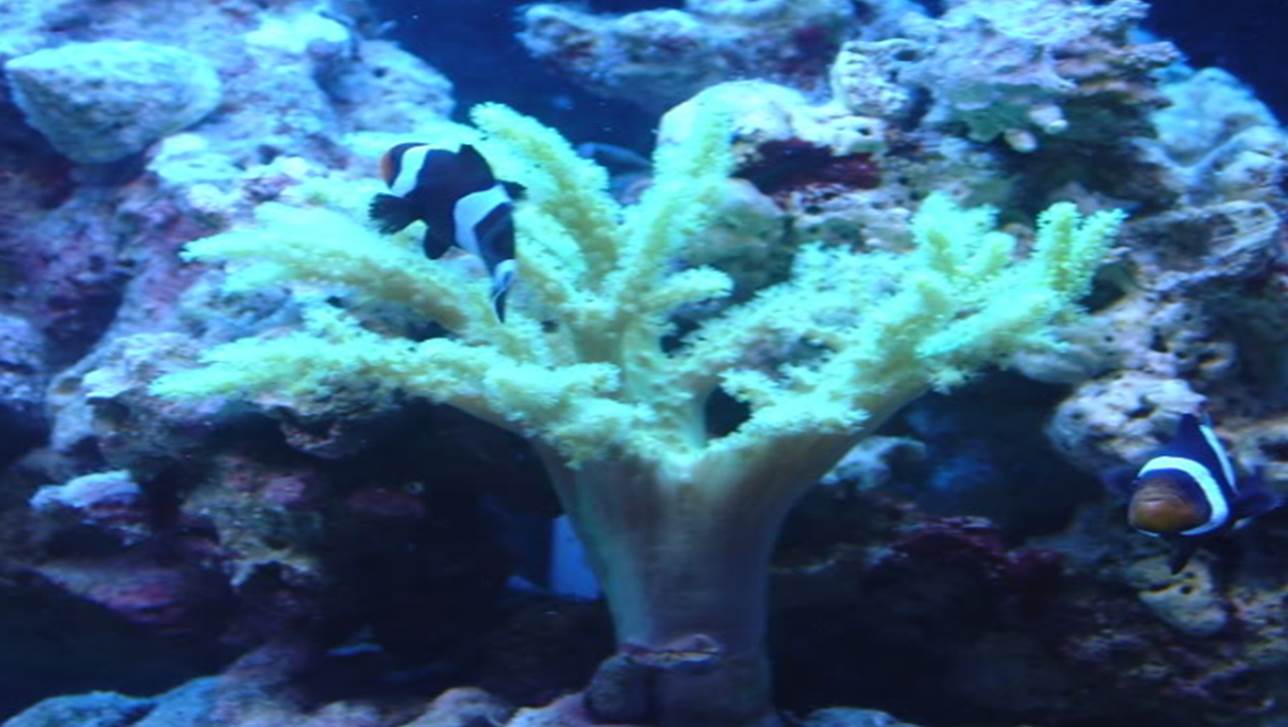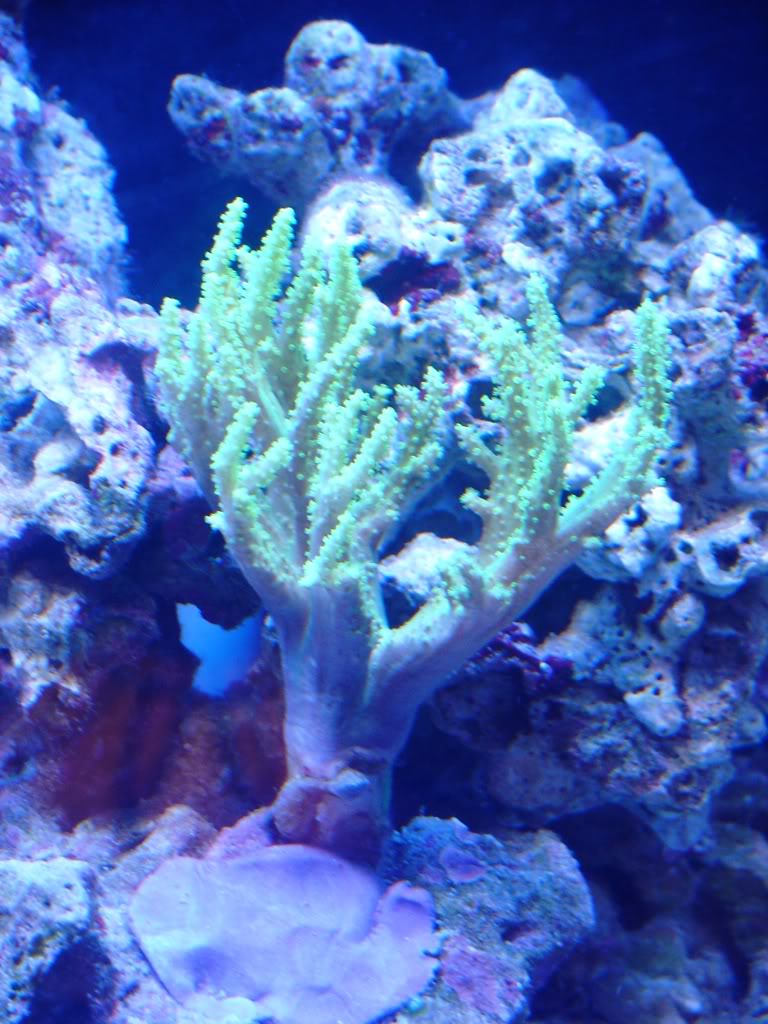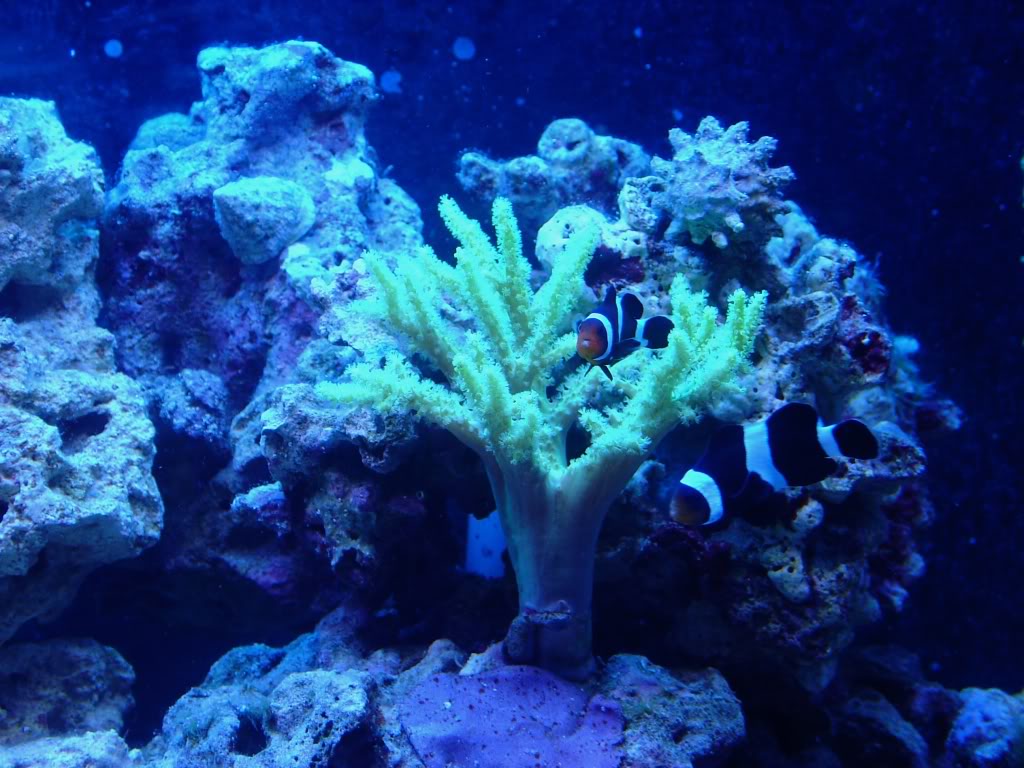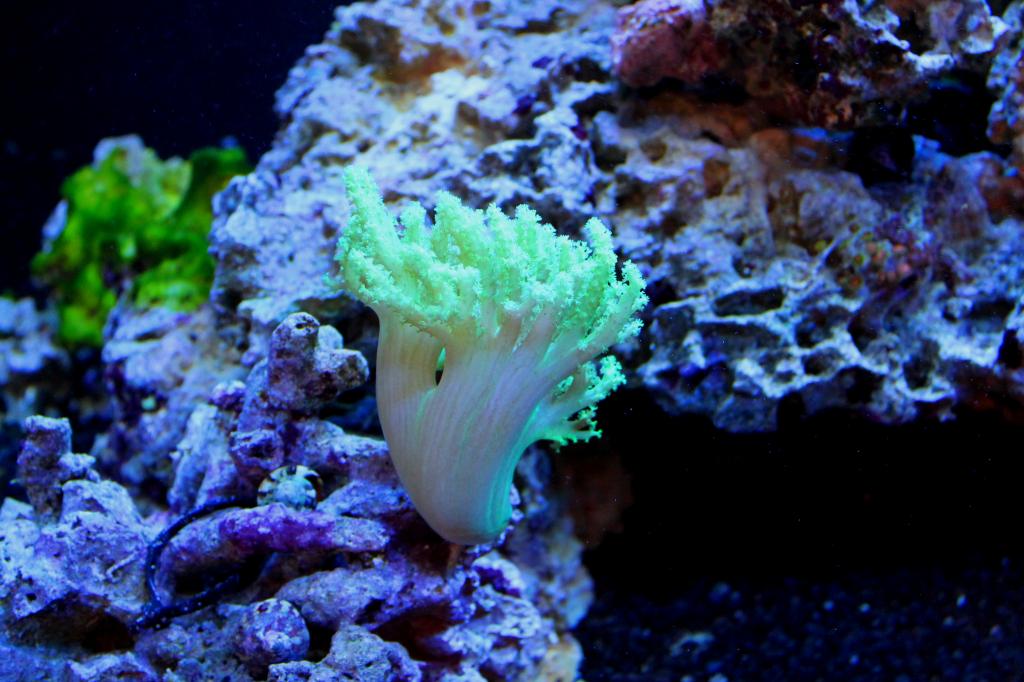
Green Nepthea Leather
Scientific Name: Nepthea SP
Common Name: Green Palua Neptha, Green Neptha Leather
Type of Coral: Softie
Lighting: Moderate and Moderate to Low
Flow: Moderate and moderate to high
Care Level: Easy
Temperament: Semi-aggressive
Appearance
Generally speaking, leather corals are a soft skinned coral with visible polyps all over their skin. A leather coral can look one way in a aquarium and then (over time) look very different when placed in another tank based only on the water parameters, lighting and flow.
The green nepthea will look like a little tree with fat branches and are green in color. The coloring can range from bright almost neon green to a darker green. The branches of the green nepthea leather coral will be covered in short polyps a little lighter in color than the base which, at times, can make it look almost “furry”. This coral should ideally get around 10 inches of tank space for its long term growth.



Water Conditions
The below link highlights typical water conditions a green nepthea leather coral will require. I have had the best luck when they were kept in water with 1 to 2 ppm of nitrate when lighting and flow requirements were met and all other water parameters in line as described in the below link.
https://www.reefaquarium.com/2013/the-basics-of-marine-aquarium-water-parameters/
General Information
They do not have a calcified skeleton structure making them a little more tolerant of some water parameters like calcium. However, they will not be very tolerance to swings in pH, Temp, or salinity which is no different than any other coral or fish. They are a very hardly coral making them a good choice for people new to the hobby. Most leathers have some very effective defensive abilities. Leathers commonly have the ability to sting other corals and some fish along with emitting chemicals to ward off other corals from entering their space. For this reason it is very important to understand how big your leather coral can get and plan for enough space between your leather coral and other corals. Just leaving a few inches may not always be enough as some leathers can get surprisingly large. It would also be a good idea to have some carbon in your set-up in case your leather will start to emit defensive chemicals. This is one coral that will be the least likely to be picked on by most fish in the hobby.
As with all corals, the exterior slime coating can be a skin irritant or even highly toxic to humans so please, handle all corals with care. I would recommend wearing rubber glove whenever you handle corals
Fragging
This Leather can be easily fragged with very high success
I was told by a retailer that these corals were hard to grow and and keep alive but I have one that has doubled in size and is very “furry” and I don’t baby it or give it special treatment. It is neon lime in color. It seems to enjoy indirect flow and lots of light.
They are one of the easier leathers to care for
Good job with yours !